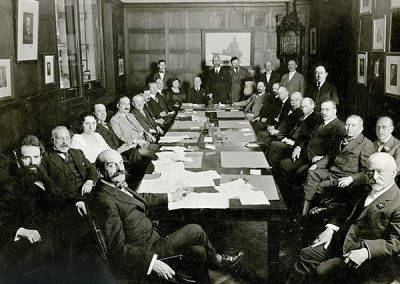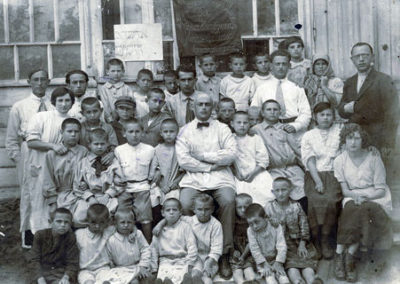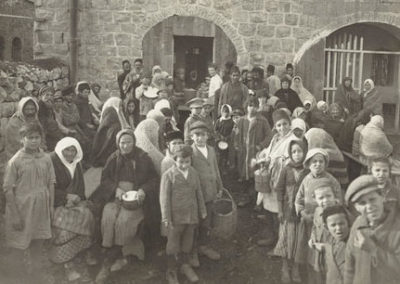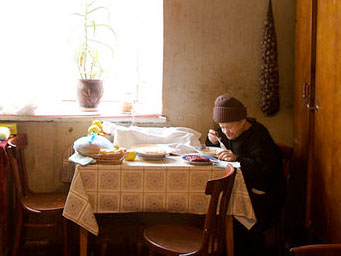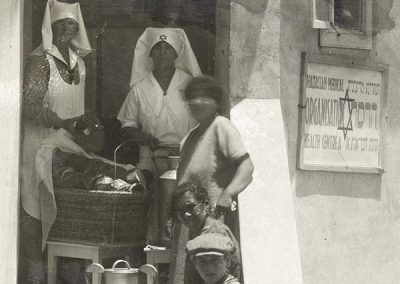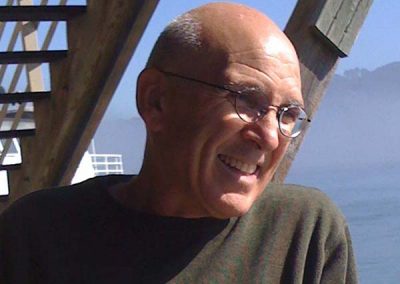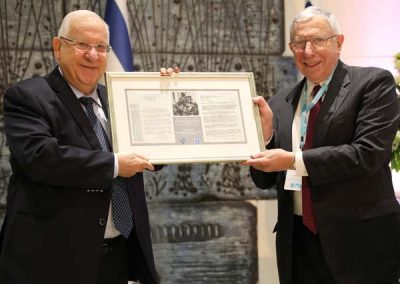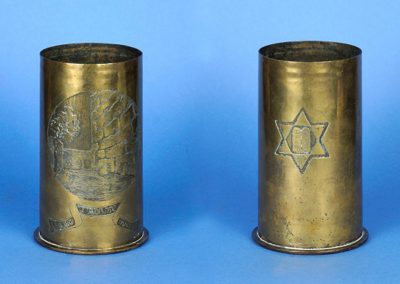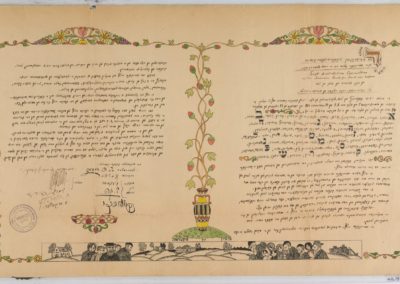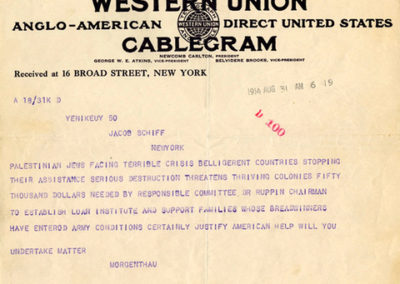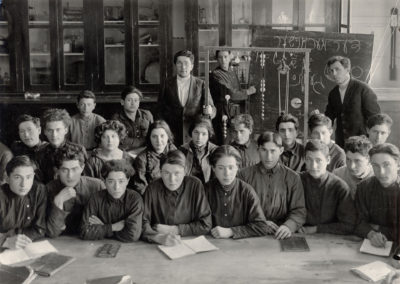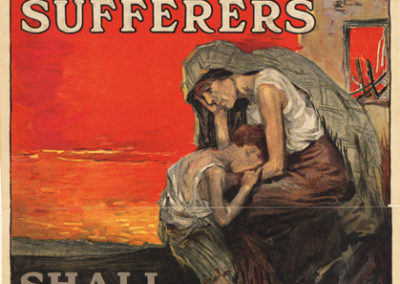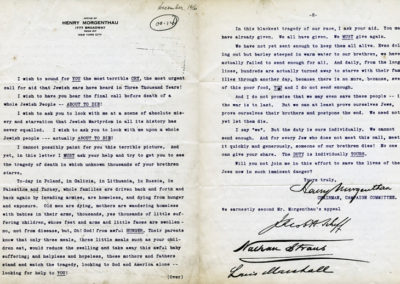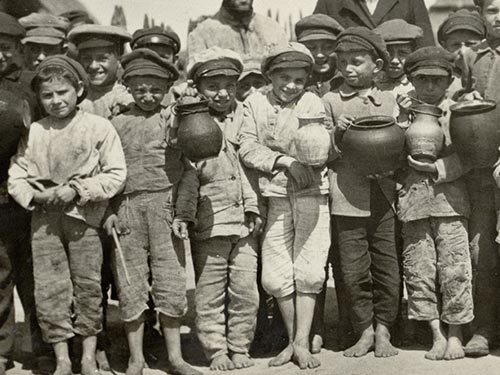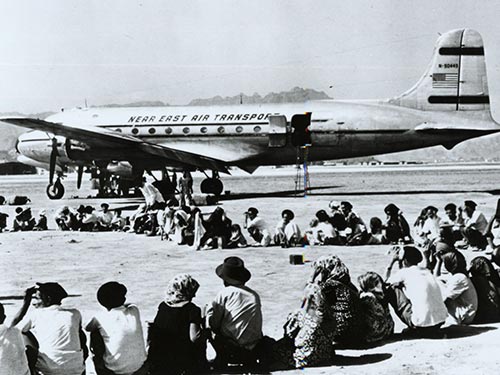JDC in the 1910s
JDC’s first cargo of preserved kosher beef is loaded aboard the SS Ashburn.
New York harbor, June 1919
JDC’s first cargo of preserved kosher beef is loaded aboard the SS Ashburn.
New York harbor, June 1919
In response to the onset of World War I and the devastation it wreaked on thousands of Jewish communities in war-torn regions, the newly-formed American Jewish Joint Distribution Committee initiated massive relief projects in Palestine to sustain fragile communities and across Eastern Europe to support communities devastated by the war.
In Depth
War and Emergency Relief — Establishment of JDC
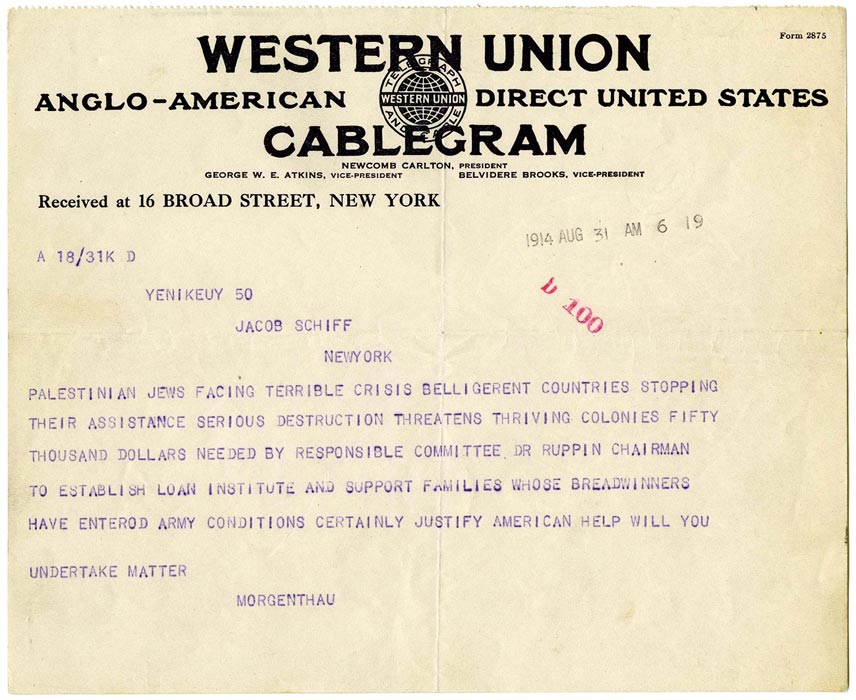
Cable from Henry Morgenthau, U.S. Ambassador to Turkey, to philanthropist Jacob Schiff, calling attention to the plight of the Jews of Palestine and asking for $50,000 in aid
1914.
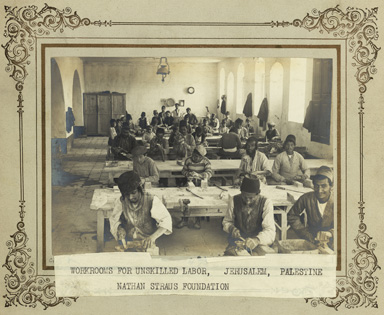
Laborers learning new skills in the workrooms of the Nathan Straus Foundation
Established even before the war, this workshop expanded with JDC funding to employ more workers.
Jerusalem, Palestine, c.1916.
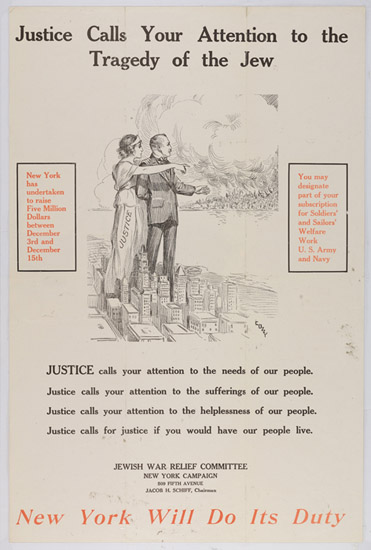
Fundraising poster by the Jewish War Relief Committee for its New York campaign
In a nationwide campaign initiated during World War I, U.S. Jewish leaders publicized the breadth of suffering abroad and the necessity of the wartime relief effort.
New York, December 1917. Artwork by Cozzy (Julius Gottsdanker).
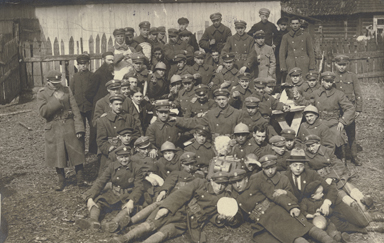
Jewish soldiers in the Polish Army pose with Passover matzah
Although JDC was established with the principal mission of providing essential humanitarian assistance to Jews affected by the destruction and displacement of World War I, from the outset it also endeavored to support Jewish communal life and activity. These Polish Jewish solders have received matzah distributed by JDC so that they could observe the Passover holiday.
Suwalki, Poland, c.1916-1918.
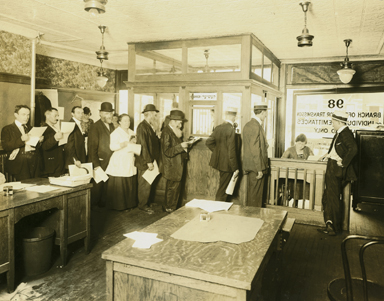
People waiting to send remittances overseas at the office of the JDC Transmission Bureau
Launched by Harriet Lowenstein, JDC’s first comptroller, the Transmission Bureau was a vehicle through which families in America could transfer funds to relatives trapped in the war zones abroad.
New York, c.1917.
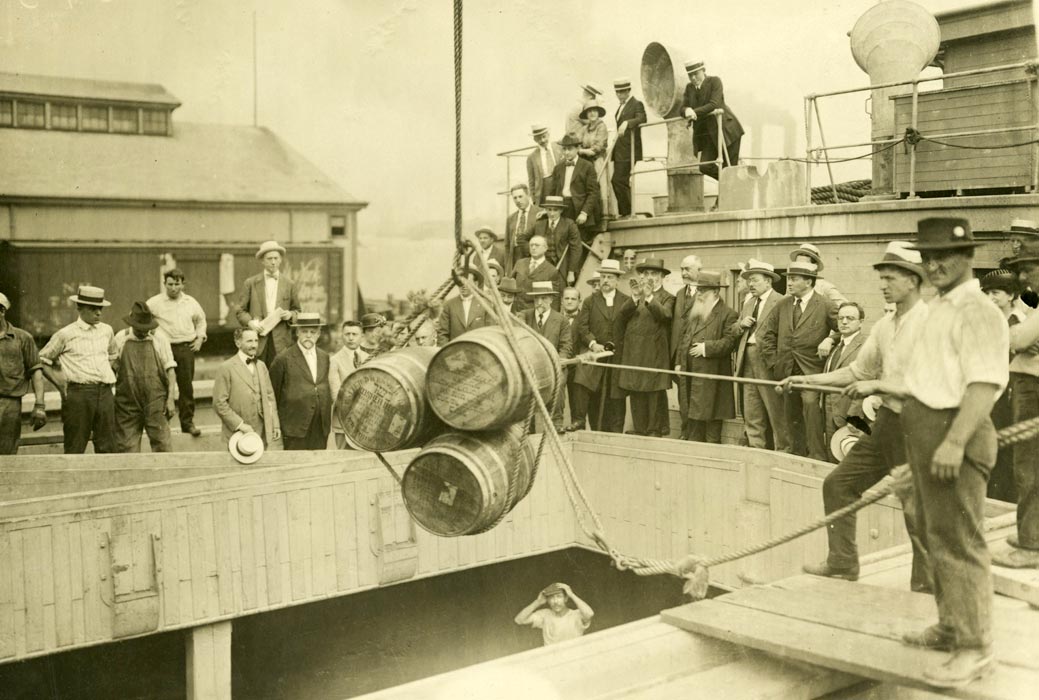
The first shipment of kosher pickled meat for the starving Jews of Poland, loaded aboard the SS Ashburn in the presence of JDC leaders and supervising rabbis
This was one of the eight shipments of food, clothing, and soap that were sent by JDC to Central and Eastern Europe in 1919 alone.
1919.
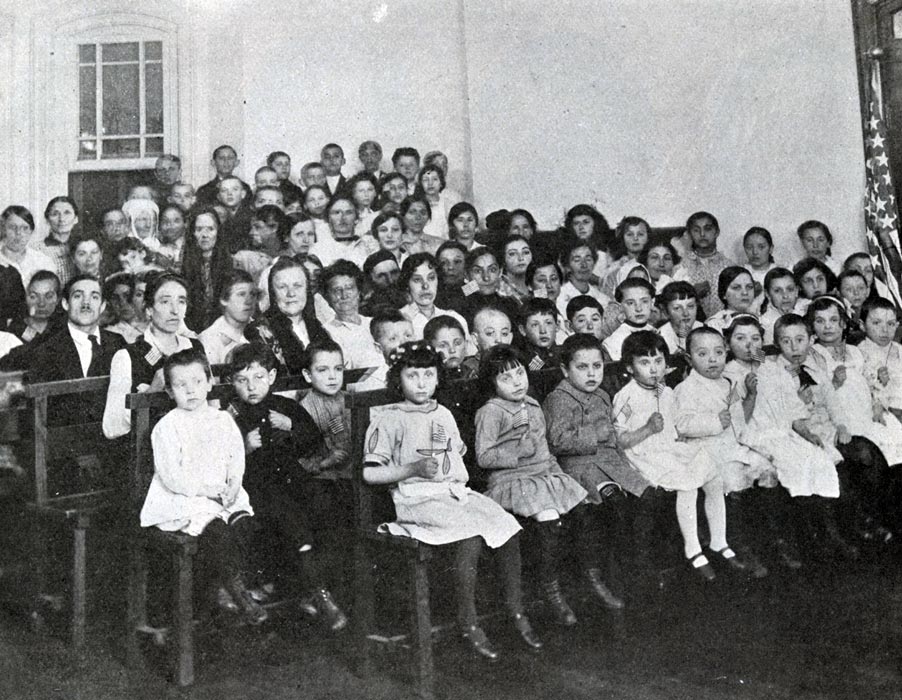
Jewish World War I refugees in Yokohama
After the 1917 Russian Revolution, thousands of Jews fled through Vladivostok to Manchuria, China, and Japan. Yokohama became an important rest stop for refugees in transit. In an early collaboration with HIAS, JDC funded their housing and other needs as they awaited more permanent resettlement opportunities.
Yokohama, Japan, c.1918.
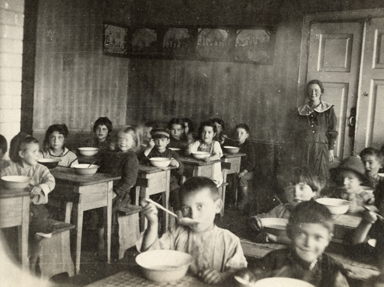
Children eating at Mendele's Kindergarten
Jews faced rampant starvation during World War I. JDC provided food and opened soup kitchens while also supporting local educational initiatives.
Bialystok, Poland, c.1918.
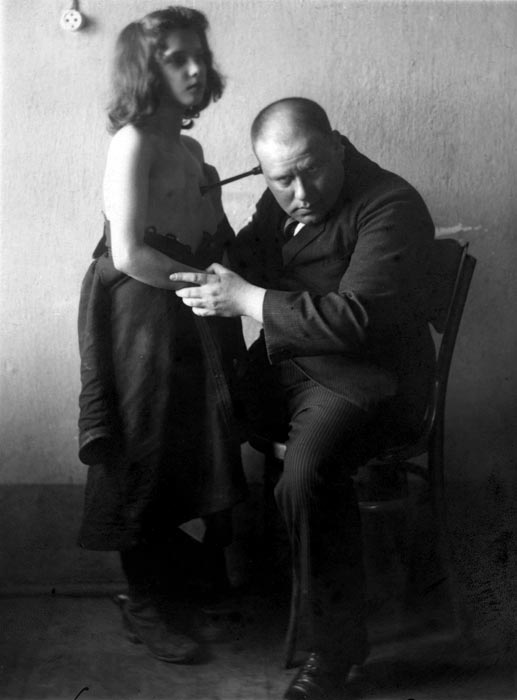
Doctor examining an orphan in Sighet, Romania, as part of JDC’s extensive medical and welfare program
JDC supported local medical committees and helped establish, reestablish, and equip hospitals and clinics throughout Romania.
Sighet, Romania, 1919.
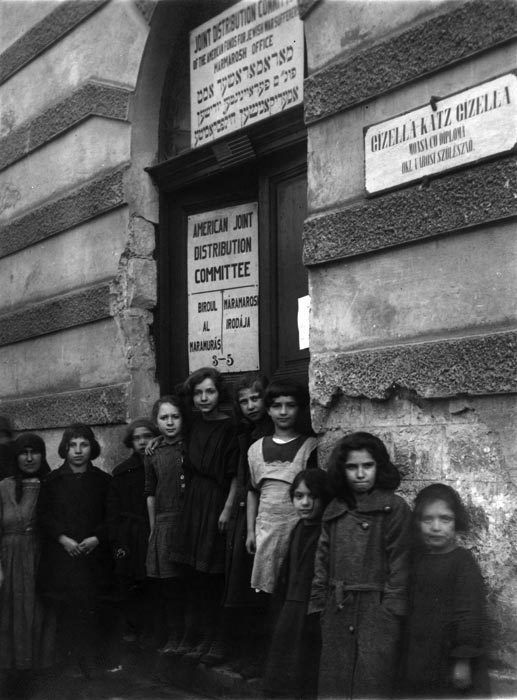
Orphans lined up for aid in front of the JDC office in Sighet, Romania
In the aftermath of World War I, JDC helped support some 58,000 Jewish children orphaned by war, disease, or pogroms in the countries of Eastern and Central Europe.
Sighet, Romania, 1919.
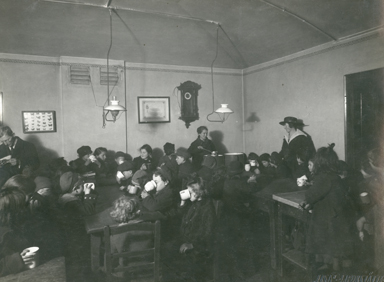
Refugee children at a milk station
Jews faced rampant starvation during World War I. JDC provided food and opened soup kitchens while also supporting local educational initiatives.
Vienna, Austria, 1919.
A Joint Effort:
JDC’s Beginnings, 1914–1921
World War I was catastrophic for Jews in Eastern Europe, already at risk from relentless poverty and prejudice, and for Jews in the Yishuv in Palestine, cut off from all support. To provide substantive help, American Jewish relief groups united to create a Joint Distribution Committee.
Exhibit
Everything Possible: JDC and the Children of the DP Camps
Featuring historic photographs from the JDC Archives, focuses on JDC’s significant efforts on behalf of children in the displaced persons camps established by the Allied Armed Forces after World War II. JDC was permitted to enter the camps to supplement minimal provisions with critical nutritional, medical, educational, and religious services for survivors.
